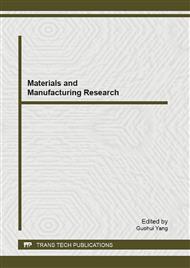p.281
p.287
p.292
p.298
p.305
p.311
p.318
p.323
p.327
Coupling Analysis on Dynamics and Tribology for Cycloid Transmission Used in Robot Joint
Abstract:
A new scheme of high speed ratio cycloid transmission system used in robot joint is proposed. It has high transmission ratio that is 5 to 10 times larger than 2K-V type cycloid transmission when they has the same volume. The 3D model of the new transmission system is established and its motion condition is simulated, so it verifies the feasibility of the transmission scheme. Considering of the factors such as sliding friction between teeth, gear meshing stiffness and torsion stiffness of the shaft, an 18-degree-of-freedom dynamical model is established, and its dynamics is investigated, the dynamical response and dynamic loads of the new transmission system components considered friction are obtained. Compared with the results having no friction, it can be find that friction between the cycloid gear and the needle teeth impacts the vibration peak value of the new transmission elements in different degree. These provide a good foundation for the dynamical design and performance analysis of a robot.
Info:
Periodical:
Pages:
305-310
Citation:
Online since:
January 2013
Authors:
Keywords:
Price:
Сopyright:
© 2013 Trans Tech Publications Ltd. All Rights Reserved
Share:
Citation:


